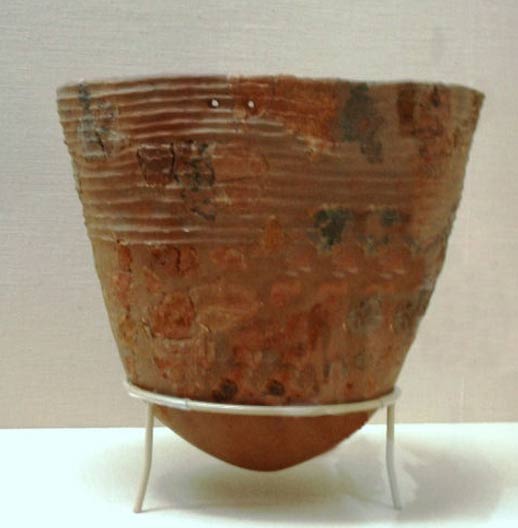
9,000-year-old human remains may shed light on prehistoric Okinawa
Human bones as old as 9,000 years have been unearthed on the Japanese island of Okinawa. Researchers hope they will help elucidate what people’s lives and burial practices were like in the Paleolithic era of Okinawa.
Previously bones as old as 32,000 years have been found on the island chain of Okinawa. The bones unearthed most recently date to the Jōmon Culture, which existed between 12,000 and 1,700 years ago. The Jomon culture is known for its pottery. Until recently it was thought the people of that time and place got their food by hunting and gathering, but recent research has found they also did some domestication of plants and animals.
The remains were from a depth below where earthenware 9,000 years old had been found in the past. This may mean the bones date further back in time.
The Asahi Shimbun newspapers says the find is one of the oldest in Japan and may shed light on prehistory. The bones were found 3 yards (3 meters) underground at the Sakitari-do cave site in Nanjo, Okinawa Prefecture. Their depth and the fact that the joints in the arms were still connected indicated to researchers that the remains had not been disturbed. This suggests the cave was used as a tomb.

Ancient human remains found at the Sakitari-do cave site in Nanjo, Okinawa Prefecture. The area being pointed to is the head. Credit: Shunsuke Nakamura
Four stones approximately 30 centimeters [11.8 inches] were placed over the head, chest and stomach of the adult. The person was of undetermined gender and lying face-up.
The Asahi Shimbun story says the find may help fill in a blank period in which no traces of humans living in Okinawa were found between Paleololithic Minatogawa Man of 20,000 years ago and the first indications of earthenware and culture 7,000 to 8,000 years ago. Minatogawa Man’s remains were found in the town of Yaese.

Minatogawa man fossil (Photo by Photaro, Wikimedia Commons)
“How did the prehistoric people of Okinawa treat the dead?" Okinawa museum curator Shinji Yamasaki rhetorically asked Asahi Shimbun. "This find offers a glimpse of their view of life and death, and the spiritual world. It also serves as material evidence for revisiting the debate on whether the Shiraho (cave ruin) remains and those of Minatogawa Man are graves.”
The Okinawa Prefectural Museum and Art Museum in Naha has been excavating in the area and announced the new find December 11.
Human remains dating back 20,000 years have been uncovered in Okinawa at the Shiraho Saonetabaru Cave Ruins in Ishigaki. Every time bones this old are found debate ensues as to whether the sites were graves.
The website Prehistoric Okinawa speculates about human habitation of the island chain, which is south of the main Japanese archipelago:
It is not clear when humans came to inhabit the islands but fossil human bones from the Yamashita-cho Cave 1, excavated in Naha City, have been positively dated to 32,000 years ago and, in Gushigami-son village, the remains of the Minatogawa people have been dated to 17,000 years ago. These Paleolithic humans are thought to have crossed over on a land bridge from continental China but exact details remain unknown.
This latest find may fill in a blank spot. Prehistory of Okinawa is clouded by a lack of artifacts and remains from just this period of 9,000 years ago. From the era of the Minatogawa humans, 17,000 years ago, until the Neolithic era 7,000 years ago, evidence of humans is scarce.
The Incipient Jōmon period began around 10,500 B.C. and lasted until 8,000 B.C. The remains found at Sakitari-do cave may date from this period.

Jomon Rope pottery from 10,000 to 8,000 B.C. (Wikimedia Commons)
More than 80 sites with Incipient Jōmon pottery are known, but the majority of Jomon pottery on Japan comes from later periods, after 8,000 years ago. The pottery is small and usually has rounded bottoms, which means the pots may have been used to fit into fires and boil water. The name Jomon means “rope-patterned,” referring to how the potters pressed rope into the surface, leaving impressions. Later Jōmon pottery was much more elaborate.

As time passed on Okinawa Jomon pottery became much more elaborate. (Photo by Morio, Wikimedia Commons)
Featured image: Tokashiki Island in Okinawa, Japan. Source: BigStockPhoto
By Mark Miller
















Comments
Amazing discovery!